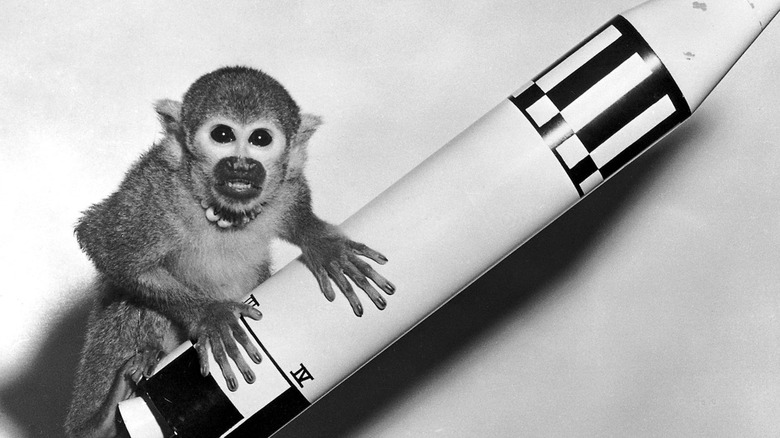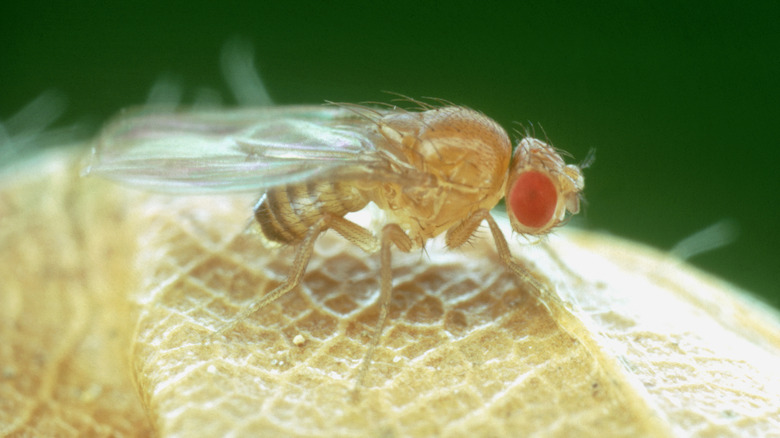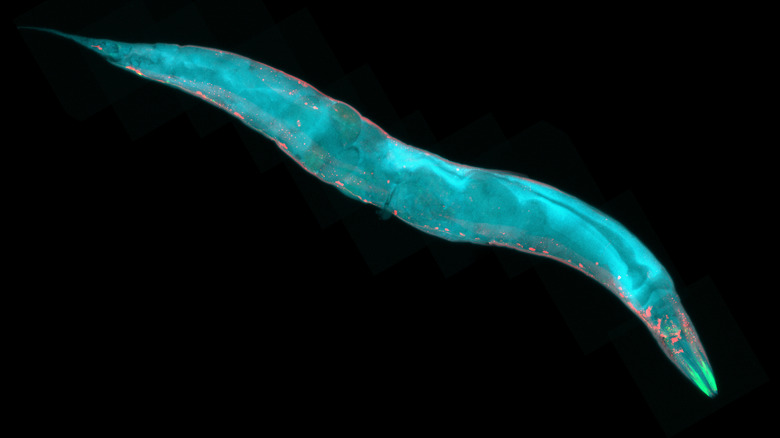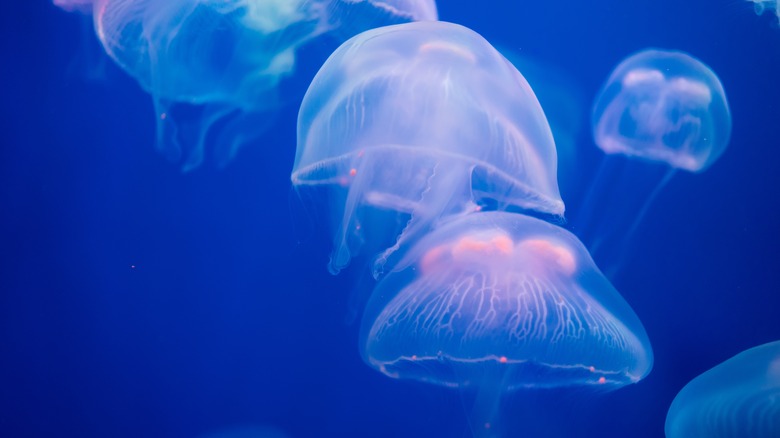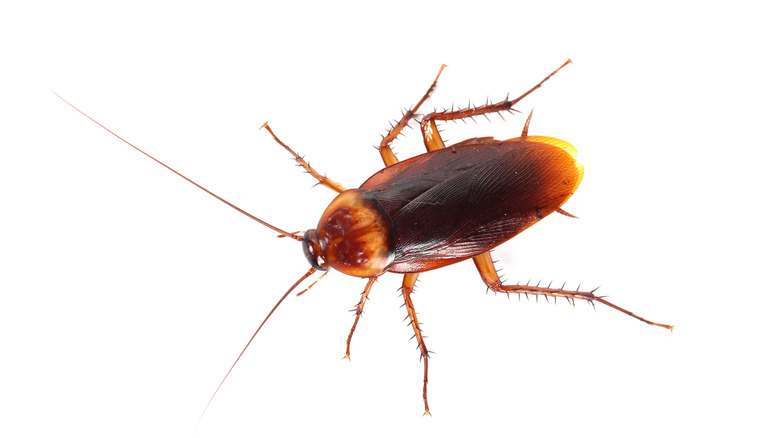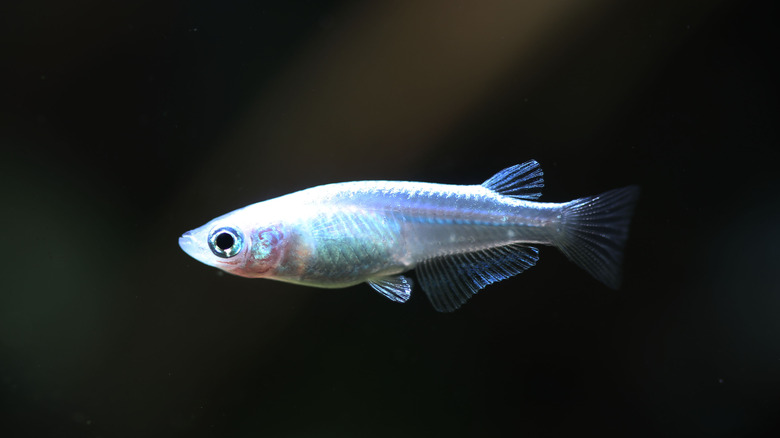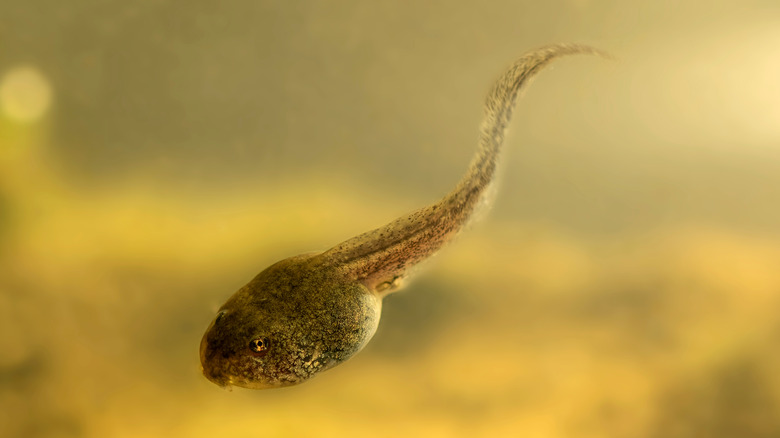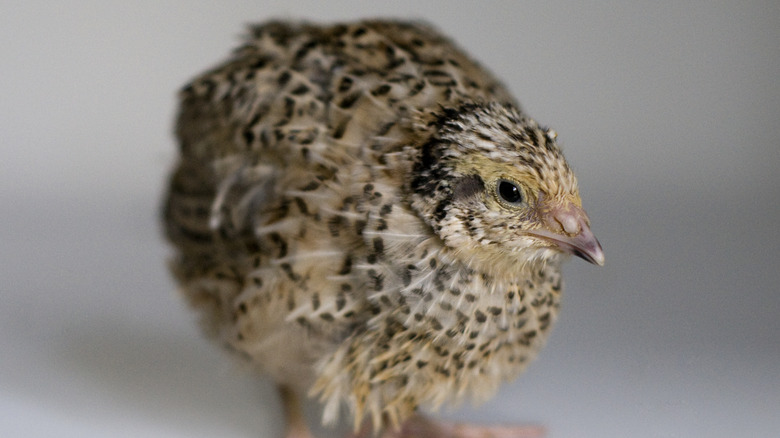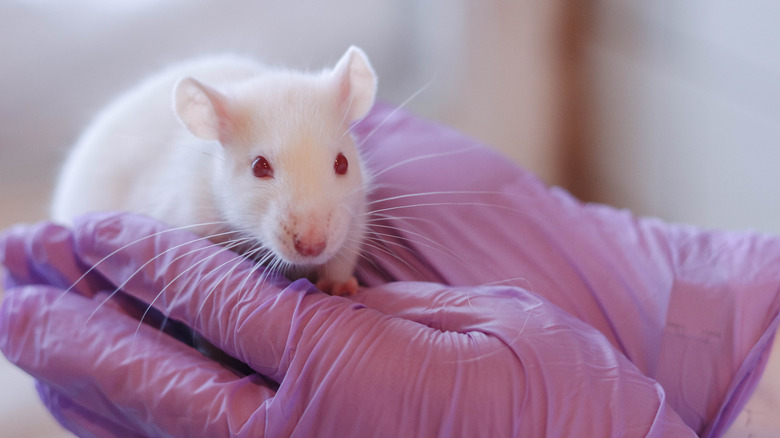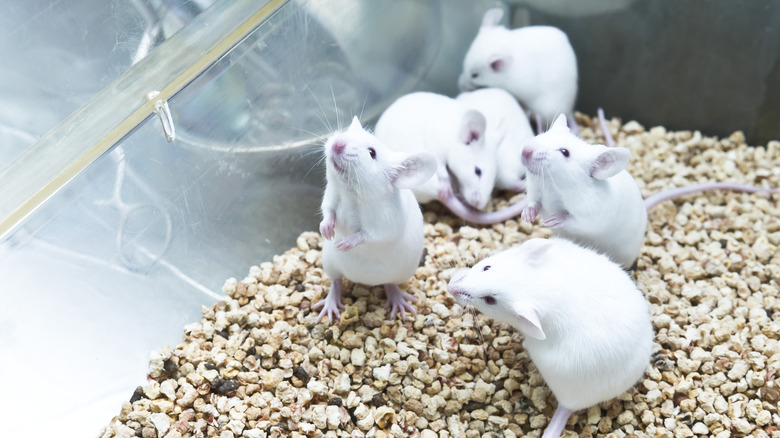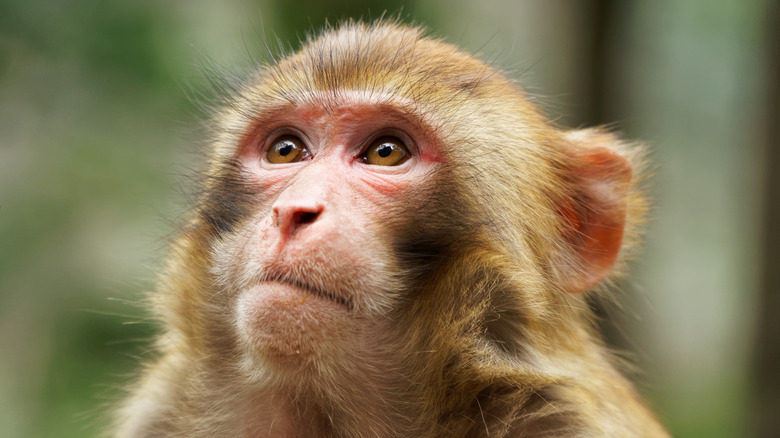Captivating Earth Creatures Born And Raised In Space
One way or another, it's likely that the future will see humans travel away from Earth, perhaps to make a new home elsewhere. This, however, raises some big questions. What will happen if people try to start families while in space? Will human babies be born healthy, and will they ever be able to adapt to life back home on Earth? While there have been some scientific studies that hint that babies born in space could be perfectly healthy, the truth is no one knows for certain. To try and help find an answer, biologists have been sending animals to space for years to see if they can successfully procreate in orbit.
At the moment though, there still seem to be more questions than answers. Most of the animals to have reproduced in space have been invertebrates, creatures without bones like worms and snails. More complex animals tend to be more sensitive to changes, and vertebrates have had less luck. As vertebrates ourselves, learning how this works will have important implications for humanity's future elsewhere in the galaxy. So far, scientists have found that, while some animals can have babies more-or-less normally in orbit, others suffer from health problems. And as a study published in Life (Basel) discusses, the main problem seems to be down to the lack of gravity. Nonetheless, so far several animals have been able to mate and successfully reproduce in space — here are some of these captivating space-born and raised creatures.
Fruit flies
The first-ever astronauts were humble fruit flies. In 1947, as Nature notes, several of these lowly insects were launched into orbit on a captured German V2 rocket, over a decade before NASA was even founded. Ever since, fruit flies have been an all-important test animal in studies on how spaceflight affects living creatures: In terms of genetics and cell biology, they're surprisingly similar to humans, and they're tiny enough that an army of them can be housed in a space no larger than a deck of cards. Because they're such convenient little animals to use in experiments, they've continued to be test subjects well into the 21st century, flying into orbit aboard a SpaceX Dragon capsule long before any humans did.
In some experiments, fruit flies have successfully managed to produce offspring in orbit. As a study in PLoS ONE details, this happened in 2006 in an experiment aboard a NASA space shuttle. There was, however, one concerning detail about the space-born fruit flies. A pretty big one, too: They had compromised immune systems. While the adult flies were unaffected by their journey to space, their young showed cellular changes which made them less able to fight off bacterial infections. Rather than being one single change, there appeared to be several working together to hinder their immunity. Other studies have also shown that the microgravity environment in orbit causes fruit fly sperm cells to slow down, making them less motile and possibly affecting the flies' fertility.
Nematode worms
As a rule, the simpler the animal, the more easily it can reproduce in space. Which makes sense when you think about it. Simple animals like worms are survivors, able to endure a variety of extreme and hostile conditions here on Earth. In their space-based studies, NASA has chosen one particularly resilient type of nematode worm named Caenorhabditis elegans — commonly known as C. elegans — as a test subject. These rugged little organisms can seemingly mate and reproduce perfectly normally in orbit, yielding healthy offspring. Though perhaps this isn't too surprising, as C. elegans is certainly a tough little animal: Other scientists have reported that these worms can survive being frozen for 32 years among wheat seeds, returning to full health after they were defrosted.
Not only can C. elegans nematodes reproduce normally, but they also appear to develop perfectly normally too. With their small size and short lifespan, they're excellent test subjects for studies like these, and they've also been used to investigate another important question about prolonged spaceflight — aging. C. elegans have been used by NASA to study aging in space, and whether the process differs to the way it unfolds on Earth. These unassuming little astronauts may well have a lot to teach humanity about life in space, and how orbital living might affect our bodies in old age.
Jellyfish
By far the most prolific creatures to have reproduced in orbit to date are jellyfish. NASA's STS-40 shuttle mission in 2014 was the first space mission dedicated entirely to life sciences. In its payload, this shuttle carried 2000 jellyfish as passengers. By the end of the mission, these had successfully reproduced (per Advances in Space Research) meaning there were thousands more orbiting Earth — possibly the largest number of living things ever to occupy a single space shuttle. There was, however, one complication with the space jellies. Jellyfish may not appear too bothered by gravity on Earth, seemingly content to drift aimlessly. Unexpectedly, gravity turned out to matter much more to the growing jellyfish than expected. So much so, that the space jellies had trouble adapting to life back on Earth.
Jellyfish have sensory pockets in their bodies that work a bit like human ears, helping them orient themselves and tell up from down. Jellyfish born in orbit appeared to have normally developed sensory pockets, but were apparently unable to use them on Earth. Moving erratically, disoriented, and unable to propel themselves normally, the space jellyfish had simply never learned to tell up from down. They were otherwise perfectly healthy, developing perfectly normally, but jellyfish born in space seemed to only be suited to life in space. All of this raises worrying implications for any humans who may be born in space in the future, and the fact that they may have similar trouble adapting to life back on Earth.
Cockroaches
In 2007, an experiment by Russia's Roscosmos space agency managed to get cockroaches to mate in orbit. Cockroaches are famous for their hardiness and survival ability, and they're more resistant to radiation than humans, which would certainly be a helpful skill in orbit where radiation levels are significantly higher than they are here on Earth's surface — although in reality they aren't quite as radiation-proof as most people believe. For astronauts though, exposure to higher-than-normal levels of radiation is just part of the job. Being in orbit exposes people to radiation levels hundreds of times higher than having a chest x-ray.
The amount of radiation in space may sound concerning, even within the protection of Earth's magnetic field, but scientists expect it to be less of an issue for developing animals than the lack of gravity. Unfortunately, in this case, there's no way to know if the lack of gravity would affect cockroaches. The cockroaches in the Russian experiment weren't actually born in space. The mother roach, named Nadezhda (the Russian word for hope), didn't give birth to her young until she was safely back on Earth's surface. The space roaches went some way to proving that conception in microgravity isn't a problem for Earth creatures. Seemingly, the health problems which afflicted other space-born animals arose during their growth and development.
Japanese rice fish
Research on space life for humans is more helpful when it comes from other animals with bones, and the first vertebrate animals bred in space were fish. As explained in Life (Basel), a 1994 experiment saw the first time vertebrates were able to mate, fertilize, and hatch out in space. The experiment was codenamed MEDAKA, named for the fish in question — Japanese rice fish, also known as medakas. Many fish have trouble swimming in microgravity, as disoriented by the lack of gravity they swim in loops, struggling to find which way is up. Medakas, on the other hand, are surprisingly tolerant of microgravity, managing to swim normally. This makes them quite well-suited to be aquatic astronauts.
The first medaka fish to fly on a space shuttle laid a total of 43 eggs, eight of which hatched before landing, producing the first healthy fish to be born in space. The adult fish, however, didn't adapt too well to microgravity. Loss of bone density while in orbit is a problem that affects any human astronauts who spend more than 20 days in orbit. As a study in Scientific Reports explains though, medakas start to lose bone density immediately when they reach orbit. All the same, they tolerate being in space well enough that biologists have sent more medakas into orbit since. In 2012, JAXA even installed an aquarium for them aboard the International Space Station. To date, medakas are the only vertebrate animal species to have completed their entire life cycle in space.
Frogs
Frogs born in space haven't fared quite as well as fish, according to Life (Basel). Down on Earth, frog eggs need gravity to survive. All the same, researchers have managed to rear tadpoles in orbit, but their embryos tend to develop a few abnormalities, which can lead to birth defects. While some are born perfectly normal and healthy, others seem to hatch out with significantly larger heads, brains, and eyes than usual — a serious effect of animals developing without gravity. Tadpoles also have the exact same disorientation problems as fish, swimming in loops as they try in vain to find which way is up.
As amphibians, tadpoles can "breathe" underwater with gills, but they also have lungs that develop as they grow. By the time they mature into frogs, they lose their gills entirely. Per New Scientist, tadpoles on Earth rely on gravity to help them find the water's surface, where they can find air for their still-developing lungs. Doing this periodically helps their lungs to mature healthily, which the space tadpoles were unable to do. Unlike the jellyfish though, space tadpoles were able to adapt to being back on Earth fairly quickly. Just a few hours after returning to Earth, the space tadpoles were swimming perfectly normally, despite their unusual birthplace. Even though they spent their first few days swimming in circles, unable to find the surface of the water, all the space tadpoles also grew up perfectly normally after returning to Earth.
Japanese quails
A little-known part of the Space Race between the USA and USSR was a contest to hatch the first bird eggs in space. In 1990, according to a review in Life (Basel), the Soviets won this competition when Japanese quails were born on the Mir space station. The eggs had been fertilized on Earth, but were then sent into space, where they were incubated and hatched in Earth orbit. This early experiment showed a few things about animal development in microgravity.
On one hand, the egg incubation time was about the same as the time they'd usually take on Earth's surface: Animals don't take any longer to grow while in space. On the other hand, the hatchlings were also more likely to have birth abnormalities, particularly in their brains, eyes, and beaks, and the hatching rate was substantially lower than usual. Evidently, animals can be very sensitive to a nearly-gravity-free environment; development from embryo to "newborn" is a delicate matter.
The first Soviet experiment with quail eggs was in 1979, in which the eggs were taken into orbit and returned to Earth to be hatched. Unfortunately, the stresses of reentry into Earth's atmosphere were too much, and only one survived after they landed. The hatchlings in 1990, though, were the first vertebrate animals ever born in orbit. Without gravity though, they had several other difficulties. Quails raised in microgravity are unable to peck normally, and being unable to hold onto anything, the hatchlings also had difficulty feeding themselves.
Rats
Rats are the stereotypical lab animal, so it makes sense that scientists have taken them into space. The first attempt to get rats to breed in space, per The New York Times, was a Soviet experiment in 1979. Towards the end of the Space Race, NASA scientists worked in collaboration for the mission too, together with scientists from a few other countries. Unfortunately though, while it was a much-hyped space mission, it ultimately ended in failure: None of the rats actually mated while in space. Mammals are quite sensitive to changes in their environment — although notably, none of the rats in the control group on the ground mated either.
Breeding mammals in orbit, it seems, is a challenging endeavor. Artificial fertilization with tiny and delicate mammalian egg cells is no less difficult in microgravity, and the fact that mammals give birth to live young makes things even more difficult. It's no coincidence that the vertebrate animals to have been successfully born in space were hatched from eggs.
The Soviet space rat experiment wasn't a complete failure though. Rats who ovulated in space gave birth to healthy young once they were safely back on the ground,and there's a chance they may even have conceived while in orbit when they weren't being monitored. They may not have been born in space, but they gave definitive proof for the first time that microgravity doesn't have any ill effects on unfertilized egg cells.
Mice
In 1998, NASA began a mission called Neurolab to study the development of animal nervous systems in orbit, per Acta Astronautica. This involved a suite of studies, including the first attempt to breed mice in space, according to Life (Basel). Unfortunately, while the mice were perfectly healthy during their journey, no mouse babies were born, or seemingly even conceived during the experiment. In fact, biologists found the journey may have affected the fertility of the male mice: Their testosterone levels plummeted, and many of their sperm cells had severely damaged DNA.
Low Earth orbit is still relatively safe from radiation, being still inside Earth's magnetic field, but this gives food for thought, especially since mice are the go-to animal for modeling human physiology. Astronauts already show similar signs of reduced testosterone levels during extended spaceflight, and those on longer journeys, further from Earth, may suffer similar fertility problems. When humans do finally reach Mars, they may have difficulty starting families there.
While no mice have been actually born in space, mice have both been conceived and born in simulated microgravity on Earth. A Japanese experiment found that fertilization seems to occur normally in mice subjected to microgravity, though they have a lower-than-normal birth rate (per Plos ONE). So far though, it seems like mammal embryos may need Earth's gravity to make sure they develop normally. That said, for now, it's still difficult to say if the same will be true for animals actually in orbit.
Monkeys
China officially opened its new Tiangong space station in November of 2022, and the China National Space Administration (CNSA) already has plans to take rearing animals in orbit to the next level. Its largest module, named Wentian, is dedicated to life science experiments. with over 1,000 experiments already planned for it. One involves taking monkeys into space in order to study how they reproduce in microgravity. If successful, these would not only be the first mammals born in orbit, but also the most human-like animals to procreate in space.
There are, however, some concerns over these plans. Some researchers raised questions about the practicality of sending monkeys into space, as well as noting that keeping them confined in small spaces for extended periods may negatively affect the animals. Despite these significant caveats though, the CNSA is currently planning to go ahead with these plans. Whether or not the monkeys will be cooperative remains to be seen but, one way or another, it'll certainly be a landmark for space-based life sciences. For now, humanity is in no position to worry about pregnancy or families in space: NASA currently has an official policy that astronauts aren't allowed to fly while pregnant, and that's unlikely to change anytime soon. But our simian cousins may show us a glimpse of the future.
